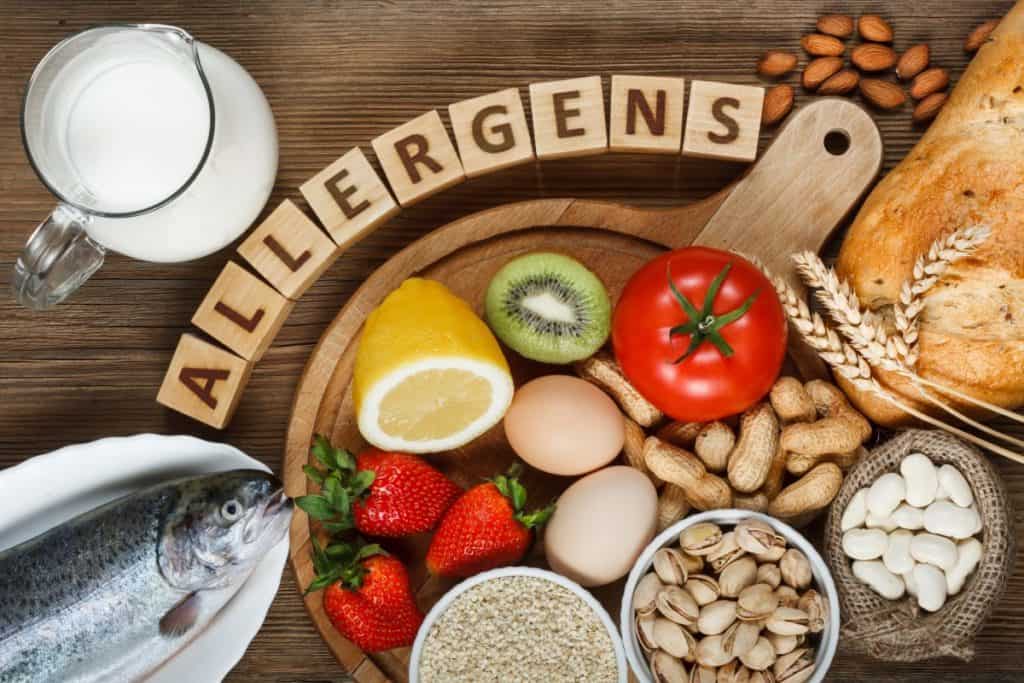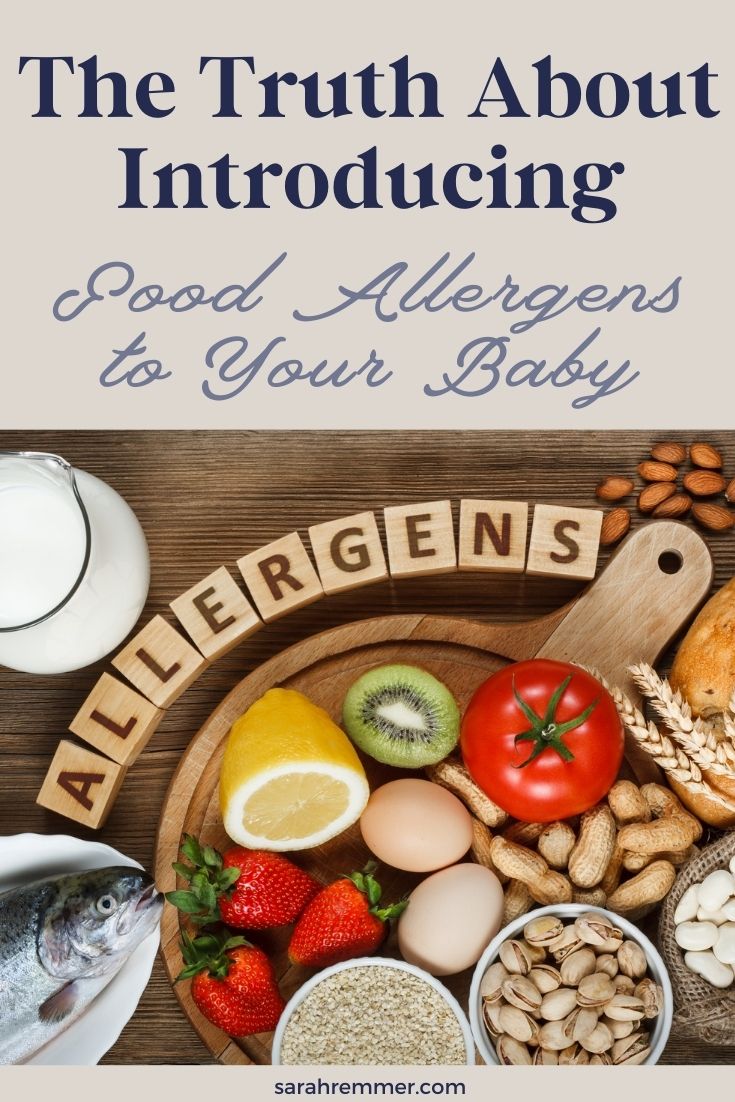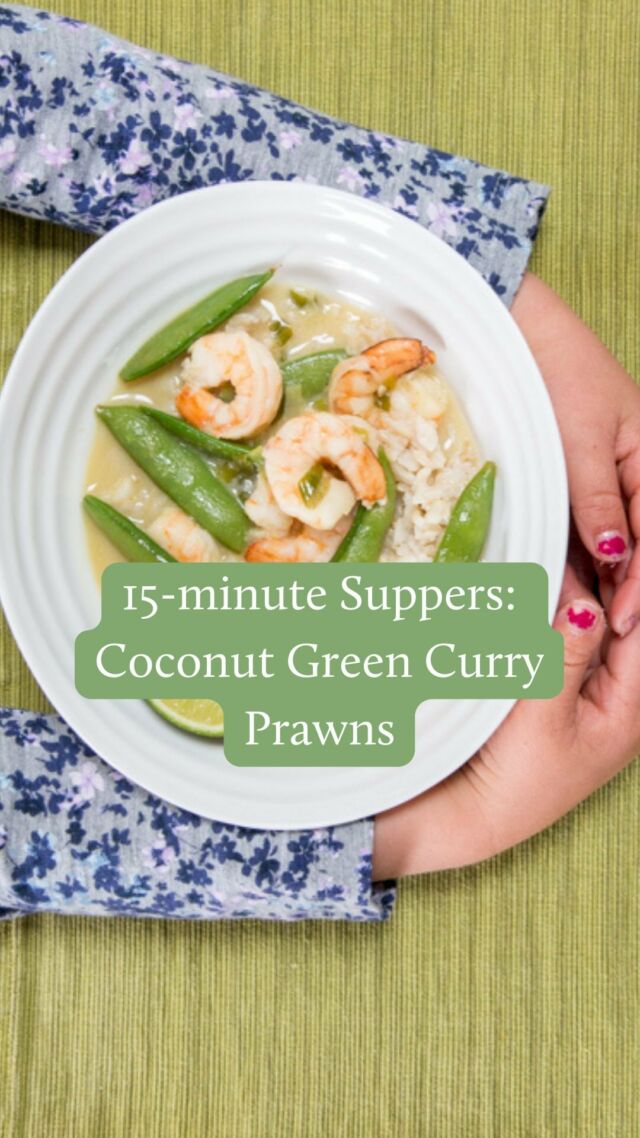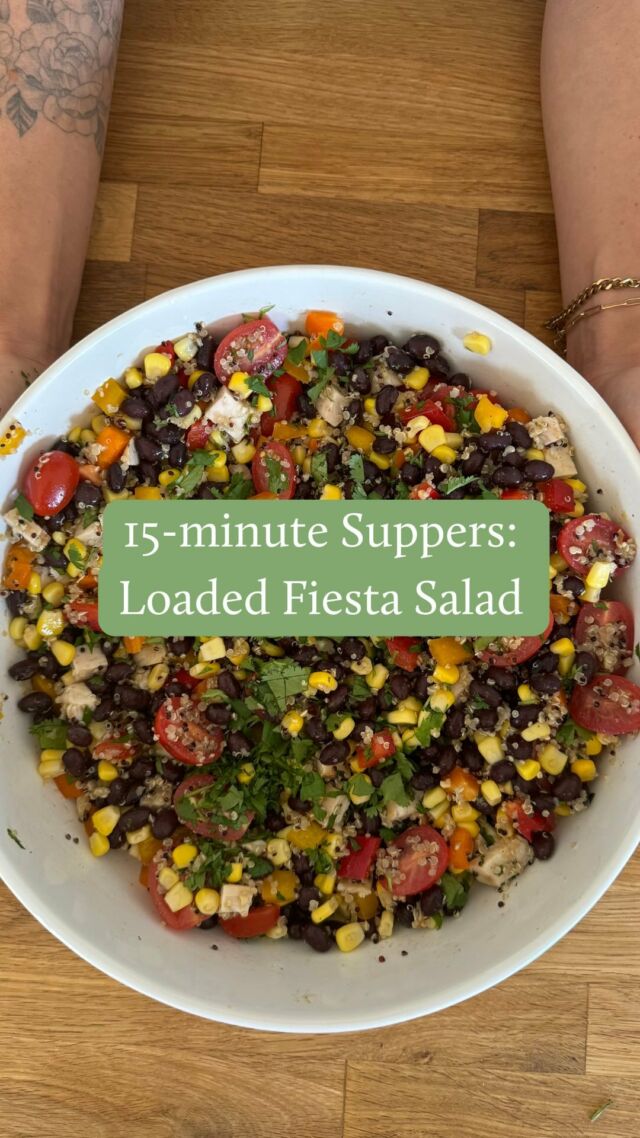Food allergies are a hot topic these days. From how to introduce allergenic food to your little one, to what to do when your child has been diagnosed, to understanding the difference between an allergy and intolerance… There is SO much information out there that it’s easy to become overwhelmed and confused. Don’t worry – I’ve got you!

So, let’s talk food allergies. A food allergy occurs when the body’s immune system believes that a certain food may be harmful and decides to react. This reaction is defensive and will produce symptoms such as rash, wheezing, diarrhea, nausea and vomiting. The most serious form of allergic reaction is an immunoglobulin E (IgE) mediated reaction, which basically means even the smallest food particle can potentially trigger a life-threatening allergic reaction known as anaphylaxis. Non-IgE mediated food allergies can also cause symptoms but are mainly disruptive to the digestive system.
What are some possible symptoms of an allergic reaction?
An allergic reaction to a food can range from mild to severe and often often appear within minutes after exposure to the food. Examples include:
- Hives, swelling, redness, or rash
- Stuffy or runny nose with itchy watery eyes
- Vomiting (although less common, vomiting, sometimes together with diarrhea, can also occur hours later)
- Cough
Severe symptoms of an allergic reaction require immediate attention (call 9-1-1). Examples include:
- Swelling of the mouth, tongue or throat
- Hives that are spreading
- Any difficulty breathing, repetitive coughing, or wheezing
- Difficulty swallowing or hoarse voice or cry
- Pale or blue colour of the face or lips
- Faintness, weakness or passing out
If you think a food is causing an allergic reaction, stop giving the food to your baby and talk to your baby’s doctor. You can continue to offer other new foods.
Health Canada lists 10 foods as “priority food allergens”.
These food allergens considered priority as they are associated with 90% of the allergic reactions among Canadians.
- Crustaceans and molluscs AKA shellfish!
- Egg
- Fish
- Milk
- Mustard
- Peanut
- Sesame
- Soy
- Tree Nuts
- Wheat and triticale

Research is constantly evolving, and in the past few years the recommendations for introducing allergenic food to babies has drastically changed. Old recommendations said to delay the introduction of allergenic foods until babies were older – almost three years old! But in 2017 guidelines for the introduction of allergic foods changed due to the ground breaking LEAP Study (Learning Early About Peanut allergy). In this study, children aged 4-11 months were randomly assigned to either consume or avoid peanut products until the age of five. Results of this study showed that of those who avoided peanut products, 17% developed a peanut allergy by age five. While only 3% of children who were free to consume peanut products developed a peanut allergy by age five. What this research study found was that introducing allergenic food (like peanuts) early was actually protective!
Here are the latest guidelines according to the 2019 the Canadian Pediatric Society
- For high-risk infants (those with severe eczema or a first-degree relative with an existing allergy or eczema), consider the introduction of common allergenic foods at six months of age, but not before four months of age (I recommend waiting to introduce solids at all until six months).
- For infants at no or low risk for food allergy, introduce complementary foods at about six months of age.
- Breastfeeding should be protected, promoted and supported for up to two years of age and beyond.
- Introduce allergenic foods one at a time in order to gauge reaction, without unnecessary delay between each new food.
- If an infant tolerates a common allergenic food, offer it a few times a week to maintain tolerance.
- Offer food in an age-appropriate manner in order to prevent choking. For young infants, peanut butter can be diluted with water or breastmilk or spread thinly on toast for older infants. Never offer whole peanuts.
Feeding your child is a huge responsibility. And when it comes to starting solids and allergenic food the pressure goes up. As a parent the best thing you can do is take a deep breath and be confident. Assess your child’s readiness to start solids – can he hold his head up on his own, does he open his mouth when food is presented, can he maneuver food to the back of his throat. And if allergies are a concern, feel confident that there is an overwhelming amount of research out there that indicates that not delaying the introduction of allergenic food is best.
Will my child outgrow their allergy?
Many children will outgrow allergies, mainly to foods such as milk, soy, eggs and wheat by the time they head off to school. However, peanut, tree nut and seafood allergies tend to remain. If your child has been diagnosed with an allergy, please know that although the diagnosis is initially scary and confusing – that it will eventually become more manageable as you become more confident. One way to gain confidence is to connect with a registered dietitian who can help you navigate the grocery store and to read food labels and ingredient lists. Another way is to connect with other parents of children with allergies, talk to teachers, and join one of the support groups available through Food Allergy Canada. You’re not alone, nor do you have to be!








Comments
BMF says
Sleeping better, exercising and eating healthier will also help lower your stress. When you’re stressed out what happens? You want to eat! So, getting your stress levels under control, keeping your goals in perspective and focusing on taking good care of yourself will help with your successful weight loss.
Corinna |friendlypantry.com says
Thank you for writing this. I know there’s a lot of fear surrounding these new guidelines. I think a big thing for food allergy moms is knowing how to feed the allergen to their baby when they have a child with that allergy already in the house. It takes some planning and prep, but it can be done!
Corinna | friendlypantry.com
fitnesshealthforever says
This is an informative post. Got a lot of info and details from here. Thank you for sharing this and looking forward to reading more of your post.
Health And Fitness Tips